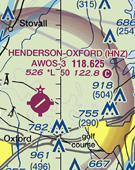Summer Flying
Well its that time of the year again where thunderstorms, hail, density altitude, wind sheer and haze all play a apart in our decision making in Go / No Go travel.
Whenever you load an aircraft to Gross Weight without thinking about performance, you are already ‘behind on the power curve’ thought process. When over 90 degrees add to your takeoff roll at least 50-60% and decrease you climb rate again by again those numbers. Launching without an understanding of the weather can ruin your day just minutes from your departure point. Not taking into consideration thermals, hot, uncomfortable cockpit temperatures, and the addition of motion sickness can make your passengers very prone to all kinds of anxieties and illness which in turn can make the interior of an aircraft a mess for all involved.
Not wearing proper sunglasses and cleaning a windshield of ‘splattered bugs’ can make scanning for birds, aircraft and other objects nearly impossible. Remember visibilities at night are very poor in haze. If you are not IFR rated then you cannot fly at night with less than 3 miles visibility. No special VFR rules are allowed since normally 3 miles visibility equals about 1 mile vis @ night. Navigating at night is an electronic, attitude flying skill. Lightning of any kind can cause flicker vertigo at night and sunglasses may be needed to cut down on the flashes to avoid this condition? Open Field Myopia is another condition where with haze in daylight hours will allow your eyes to only about 20 feet in front of the prop or nose of the aircraft. At night it dwindles down to as little as 5-10 feet in front of the aircraft. Read chapter 8 in the FAR /AIM . Needless to say, your vision is greatly reduced in haze so be extremely vigilant for birds, and other aircraft. Most mid air collisions occur in the traffic pattern on final. Scan constantly.


